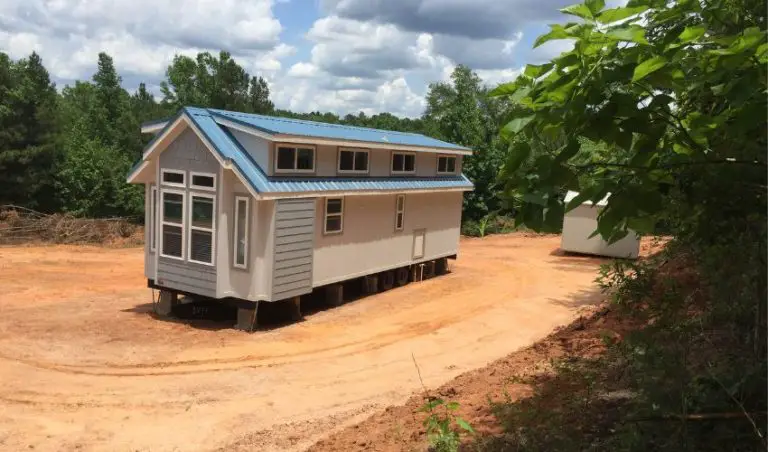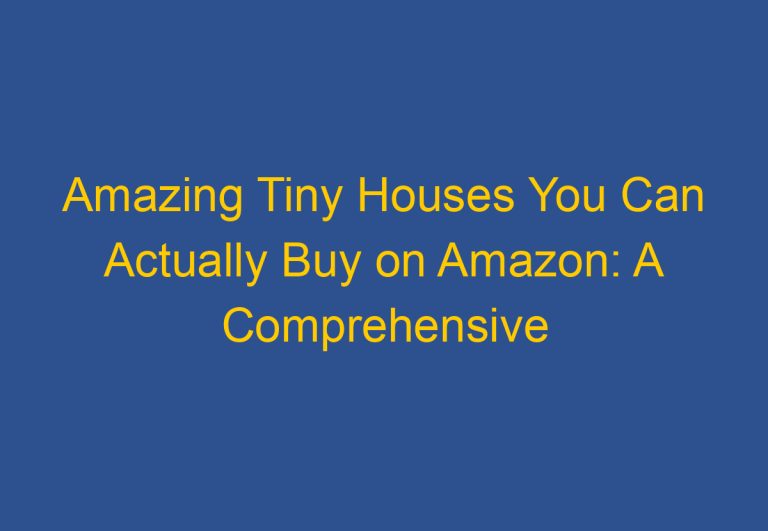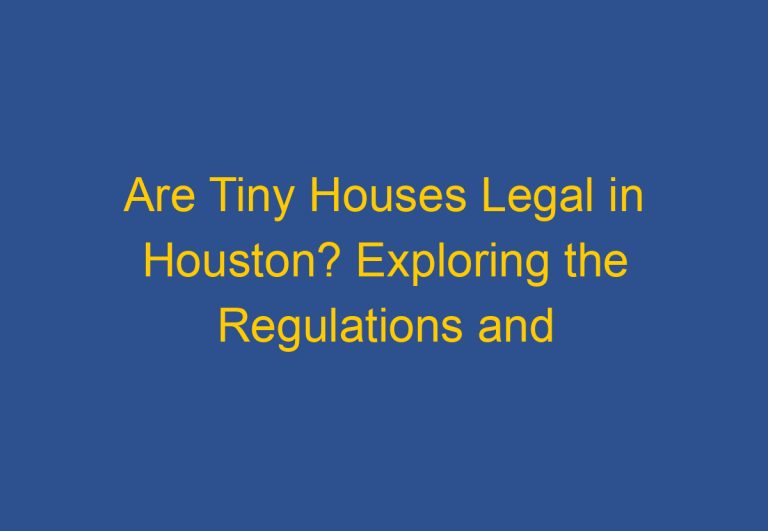Can I Buy Land and Live in a Tiny House? Exploring the Legalities and Practicalities
The tiny house movement has taken the world by storm, and it’s not hard to see why. With the rise of minimalism and the desire to live a simpler lifestyle, many people are opting for tiny homes as a way to downsize and reduce their carbon footprint. However, as with any unconventional living arrangement, there are questions about the legality of living in a tiny house on someone else’s property or buying land and living in a tiny house.
The short answer to the question of whether you can buy land and live in a tiny house is “it depends.” The laws and regulations governing tiny homes vary from state to state and even from town to town, so it’s important to do your research before making any decisions. In some areas, it’s perfectly legal to live in a tiny house on your own land, while in others, you may need to jump through some hoops to make it happen.
One thing to keep in mind is that while tiny homes are becoming more popular, they are still considered unconventional by many zoning and building codes. This means that you may need to apply for special permits or variances to build or live in a tiny house, or you may need to find land that is already zoned for tiny homes. Despite the potential legal hurdles, many people have successfully bought land and built or parked their tiny homes on it, so it’s definitely possible to make your tiny house dreams a reality.
Understanding Tiny House Living
Legal and Zoning Challenges
Living in a tiny house can present legal and zoning challenges. Building codes, zoning laws, and property regulations can vary widely from one location to another. For instance, some local ordinances may prohibit tiny houses on wheels from being parked for extended periods of time on private property. Before buying land for a tiny house, it is important to research local zoning regulations and land use regulations.
Additionally, many counties require that tiny houses meet the same building codes and compliance standards as traditional homes. This can make it difficult and expensive to construct a tiny house that is up to code. It is important to consult with local planning and building departments to ensure that a tiny house meets all legal requirements.
Benefits of a Tiny House Lifestyle
Despite the legal and zoning challenges, there are many benefits to living in a tiny house. Downsizing to a tiny house can help individuals and families save money on housing costs. Tiny houses also offer the opportunity to live a more nature-oriented and sustainable lifestyle, as many tiny houses are designed to be off-grid or to use minimal resources.
Another benefit of tiny house living is the mobility it provides. Tiny houses on wheels can be moved from one location to another, making it possible to travel and explore new areas while still enjoying the comforts of home.
Choosing the Right Location
When choosing a location for a tiny house, it is important to consider zoning laws and regulations as well as the needs of the individual or family. For those who want to live in a tiny house full-time, it may be necessary to find a location that allows for accessory dwelling units (ADUs) or tiny houses on wheels.
Other factors to consider when choosing a location for a tiny house include access to utilities, proximity to neighbors, and the availability of nearby amenities such as grocery stores and healthcare facilities. Some individuals may choose to live in a tiny house in their own backyard, while others may prefer to park their tiny house in an RV park or tiny house community.
Overall, living in a tiny house can be a rewarding and fulfilling experience for those who are willing to navigate the legal and zoning challenges and who are committed to a minimalist and sustainable lifestyle.
Acquiring Land and Preparing to Build
Finding and Financing Land
Finding the right land to build a tiny home can be a challenge. It is important to research zoning laws, building codes, and land use regulations in the area where you want to build. Some areas may not allow tiny homes or may have restrictions on the size of the home or the use of wheels.
Once you have found suitable land, financing the purchase can be another challenge. Traditional mortgage lenders may not offer financing for land without a home on it, and obtaining a loan for a tiny home can be difficult. However, there are alternative financing options available, such as land loans, home equity loans, and personal loans.
Websites such as Zillow and Land and Farm can be helpful in finding land for sale, and networking with other tiny home enthusiasts can provide valuable information and resources.
Designing Your Tiny Home
Designing a tiny home requires careful consideration of the available space and the desired features. It is important to create a floor plan that maximizes the use of space while also providing comfort and functionality.
Choosing the right windows, doors, and materials can also have a significant impact on the overall design and functionality of the home. Working with a reputable tiny house builder can help ensure that the home is designed and built to meet your specific needs and preferences.
Navigating Building and Setup
Obtaining the necessary building permits and complying with local building codes can be a complex process. It is important to research the requirements in your area and work with a qualified contractor to ensure that the home is built to code.
Setting up the home on the land may also require utilities such as water and electricity, and locating suitable RV parks or other areas for parking the home may be necessary. Noise and fire regulations may also need to be considered.
Overall, acquiring land and preparing to build a tiny home requires careful planning, research, and consideration of a variety of factors. However, with the right resources and support, it is possible to successfully navigate the process and create a comfortable and functional small home.
Frequently Asked Questions
What are the zoning regulations for placing a tiny house on private property?
Zoning regulations for tiny houses vary depending on the location. In general, most cities and counties have minimum size requirements for homes, which may exclude tiny homes. Additionally, some areas require that homes be connected to a sewer system. It is important to research local zoning regulations before purchasing land for a tiny home.
Are there any states that offer free land for setting up a tiny home?
While there are some states that offer free land for homesteading, it is important to note that these programs typically require a commitment to live on the land and develop it for a certain period of time. Additionally, the availability of free land varies by state and may not be specifically designated for tiny homes.
What permits are required to build a tiny house on my own land?
The permits required to build a tiny house on private land will depend on the location and the type of construction. In general, building permits and zoning approvals will be required. Additionally, if the tiny home will be connected to utilities, permits for electrical, plumbing, and septic systems may also be necessary.
How much does it typically cost to prepare land for a tiny house?
The cost of preparing land for a tiny house will depend on the location and the condition of the land. In general, the cost of site preparation can range from a few thousand dollars to tens of thousands of dollars. This may include clearing the land, grading, and installing utilities.
Can you legally reside in a tiny house full-time?
The legality of residing in a tiny house full-time will depend on local zoning regulations. In some areas, tiny homes may be considered recreational vehicles and may not be permitted as a primary residence. It is important to research local regulations before committing to living in a tiny home full-time.
Are guest houses or secondary dwellings allowed on residential lots in Texas?
In Texas, regulations for guest houses and secondary dwellings vary by city and county. In some areas, these types of dwellings may be permitted, while in others they may be prohibited. It is important to research local regulations before building a guest house or secondary dwelling on residential property.










